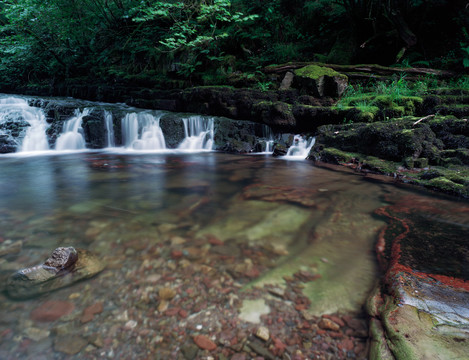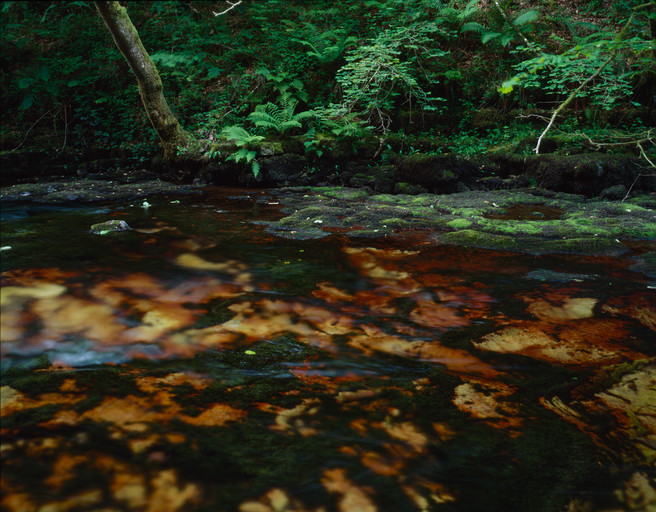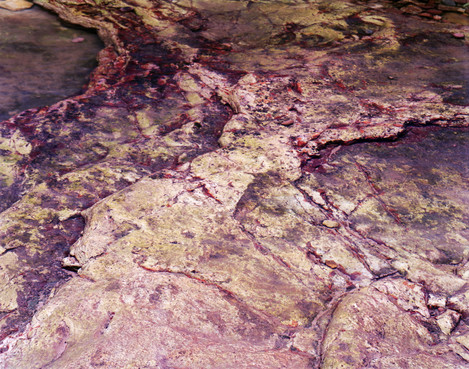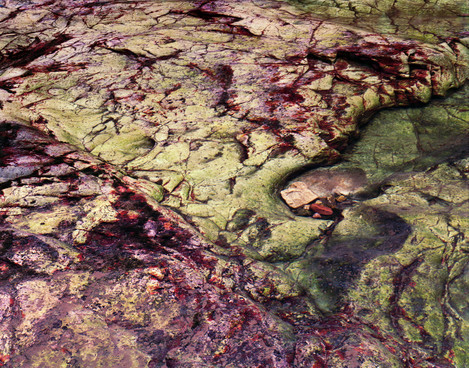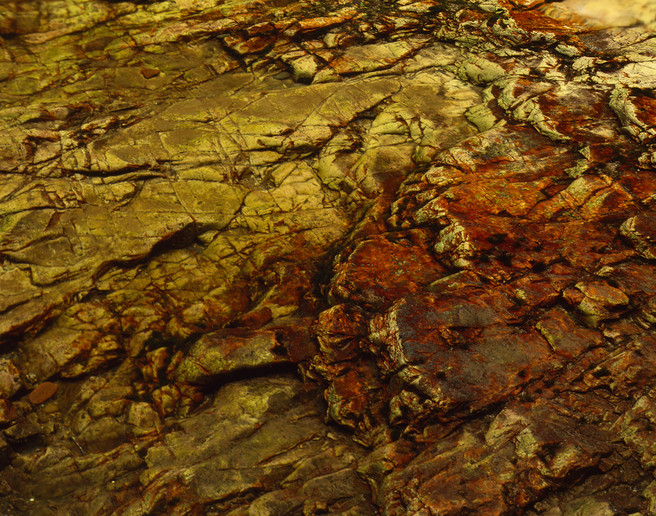Geological, topographical or environmental?

Lewis Phillips
A cultural and environmental photographer with conservation in mind all the time. Re ignited with passion since moving back to film and shooting large format.
I am so thankful for what I am able to do as part of my job, using my minds eye to be able to express a passion via creativity, using a sheet of film and a camera to catch my thoughts. The camera is an extension of my mind and when out in the environment I love the challenge of being creative. I am also fascinated by what others may interpret from what I see once the piece of work is complete. What emotion would it stir by viewing the image but also, does the writing that accompanied the image make the work more understandable.
Now I, for one, have no professional understanding of geology other than limestone, sandstone and the other basics, but when I noticed a small stretch of river bed I had walked past countless amounts of times before had the most amazing colour and detail, I wanted to explore this more.
This stretch is no more than 40 meters in length, showcasing deep reds, which, when looking closer, could give people the impression that the riverbed was bleeding.
Having on only a few occasions photographed through water, mainly at wildlife, I wanted to use this opportunity to see what the visual outcome would be of a fast flowing river over such amazing rock. I also decided that I would like to use different films to create different outcomes, be it texture, tone or contrast.
Putting this together in my head at home, I was thinking about best times to approach this subject. I did not just want to shoot for the sake of it, but I was thinking mid-summer would offer me a better opportunity due to tree cover causing less flare. I also wanted to visit during either overcast conditions or clear skies early or late in the day. My film choice was between Kodak Ektarchrome, Ektar, Portra and Ilford Ortho. I love the Kodak films - chrome for its sharpness and Ektar for its dynamic range. I would not normally use Portra for this subject, but I was intrigued by what it would produce, and Ilford Ortho is the only black and white film I use.
Over the next 6 weeks, I would venture down to the river, which was a good 2 miles from the truck once I was parked. Being accompanied by my son Gethyn on a number of occasions while documenting the stretch of river, we would discuss why the river was red. On one occasion, he noticed a large number of tadpoles in a large pool being fed by the freshwater of the river, which made his day. I get great pleasure in taking him out with me in nature, seeing his enthusiasm for being in the countryside.
I used a 2 week period of overcast weather to take a few exposures and then sent them away for development. I was quite pleased with what I had produced, but as the weather became more pleasant, it became much harder to compose scenes due to reflection and also losing possible detail in the darker areas. Shooting on my 5 by 4 camera, I found the best lens to use was my Nikkor 210mm lens with a polariser. On a 35mm camera, this is the equivalent of about an 80mm lens. I was able to get near to the surface to focus on small areas but was also able to use it for a wider view. By the way, using a large format, this was a little tricky, and my Harkila wellies often saved the day as I would be standing nearly knee deep in water at times.
Another issue would come with focusing on the bed of the river while turbulent water was flowing. It took a while to tilt and swing to get good coverage. I was always aware that some may not look as good as others, due to water depth and some exposures which went over 2 minutes (taking into account reciprocity failure). I am one to keep things as basic as possible, this way I feel it is down to me to correctly expose while also composing and focusing the view, I even count off the times for exposure.
I will confess that I do use a great app which has been very helpful called reciprocity timer, it saves me from taking printed sheets advising on times to expose the film. I have at times forgotten to take my phone with me, though, which again can cause a real problem as you have to guess what the added time would be if needed.
This is where I would also prefer negative film over slide where I can get an overall better dynamic range. I would dabble with the use of Ortho black and white film just to see how the black and white film would react to the reds of the river.
Again the film went away to the soup factory for development and returned a few days later. I then scanned the film at home and started having a look at the collection I had created in just under 2 months. This is another process I love in shooting film, it's not straight back in your face, there is so much more to it, and it can take a long time until the process is finished. I was pleased with the work. Most were exposed okay, and I was very pleased with two of the slide negatives. My personal favourite was the Ektar image, the conditions were spot on for what I was trying to create, but the film handed it all really well. I also think the composition helped, though, with simple lines of red on a flattish surface of the rock.
Back to why the river was showing these amazing colours in the limestone cracks. This particular area was once a prolific silica mine; the remnants of buildings and mines from the past are there for us all to see today. I was made aware that mining under the ground can open up cracks that could send water flowing in different directions carrying iron and minerals with it, eventually finding its escape routes through small cracks in river beds.
I do, however, like the idea of not fully knowing, it gives us the impression that the river has its own character, It shows us what it wants us to see. Eventually, it is up to us to take in what it is trying to say through how it shows itself to us. The environment is very good at expressing itself, although most of the time, we don't even notice. When we do, it can send us on a journey that we may not expect.
I can only hope that when we do notice things in the environment that were not always apparent before, it will also make us reflect on how we look after it, keeping the landscape in a healthy state for future generations to explore and wildlife to flourish. Just as important is how it allows us to express our own artistic expression; it is always changing. Documenting this is important and in many years times it may even be beneficial, but the landscape always offers us the opportunity to capture how it feels, and that is something I am very thankful for.


